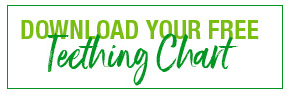
As we head into the summer season we naturally need to keep hydrated and begin consuming more beverages. So it is a good time to be mindful of what we drink and how it might be affecting our teeth.
Two of the most serious impacts on our teeth comes from consuming sugary or fizzy carbonated drinks – tooth decay and acid erosion of the teeth.
Tooth decay forms when a film of sticky bacteria known as plaque grows daily on our teeth comes into contact with sugar from food and drinks we consume. Plaque bacteria use sugar as a source of energy to multiply, grow and once digested, they release harmful toxins and acid over our teeth surfaces. It is this acid that burns through our tooth enamel and exposed tooth root to cause tooth decay whist the harmful bacterial toxins cause gum disease.
When it comes to keeping hydrated, the less we bathe our teeth in sugary drinks the better, reducing the risk of tooth decay.
Dental erosion is the loss of the protective surface of the tooth caused by acids in food and drinks. pH is the measure used to categorise how strong or erosive an acid is. Teeth begin to erode and dissolve at a pH lower than 5.5. To put this into perspective, pure water is neutral at pH7, whilst at the extremely acidic end is stomach and battery acid at between pH 1 and 3.
These are pH levels of some common food and drinks
Safe zone ph 6 – 7: tap water, distilled water, soy milk, goat’s milk, cow’s milk, sunflower seeds, olive oils
Moderately acidic ph 4 – 5: vinegar, beer, wine, black tea, sweetened fruit juice, artificial sweeteners, hard cheese, white sugar, coffee, chocolates
Very acidic pH 2-3: carbonated fizzy drinks, energy drinks, sparkling water, pickles
Early signs of dental erosion include loss of the surface texture of the tooth, leading to a smooth, shiny appearance. Dental erosion can also make any exposed tooth root sensitive to hot, cold or sweet foods and drinks.
Saliva is a natural defence against dental erosion. Saliva can wash acids out of your mouth into the stomach, it can neutralise acid, and it can repair the early stages of tooth softening by repairing tooth mineral. A dry mouth can increase your risk of dental erosion.
So how can we reduce the risk of tooth decay and dental erosion as we drink more over summer?
1. Stay well hydrated, as this improves your saliva. Remember that dehydration can reduce the amount of saliva you make, so drink lots of water which is in the safe ph zone.
- Choose tap water- Tap water contains fluoride andstrengthens your enamel, making your teeth more resistant to decay.
- Avoid the carbonated fizzy drinks as the acid can wear down the enamel.
- Turn to tea- Tea contains compounds that suppress bacteria, slowing down tooth decay and gum disease. Remember to avoid adding sugar.
- Drink a glass of water to rinse away sugars after consuming sugary or acidic beverages.
- Flavoured milk is thought to be more tooth friendly than many sweetened beverages (e.g. cordial and soft drink) and some fruit juices (e.g. orange, grapefruit and pineapple juice) because flavoured milk is not acidic and contains casein, calcium and phosphorus.
- Use a sustainable straw in acidic beverages to reduce the contact with your teeth and finish the drink quickly rather than sipping it over a period of time limiting the acid exposure in your mouth.
Should you require any dental assistance over the summer period or have any concerns, book in with your local nib Dental Care dentist.




